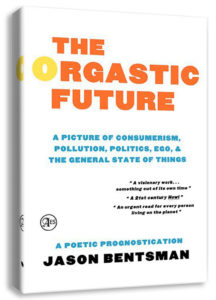 How Your Cat Is Making You Crazy – Atlantic Monthly
How Your Cat Is Making You Crazy – Atlantic Monthly
Jaroslav Flegr is no kook. And yet, for years, he suspected his mind had been taken over by parasites that had invaded his brain. So the prolific biologist took his science-fiction hunch into the lab. What he’s now discovering will startle you. Could tiny organisms carried by house cats. . .
Biggest mistake thus far: ordering a large popcorn at a screening of Béla Tarr’s The Turin Horse at Lincoln Center.
Every experience is an opportunity for enlightenment.
In high school I was voted ‘Most likely to commit suicide.’
A grizzled carriage horse, a grizzled father, a grizzled daughter, a dilapidated cottage, an endless windstorm, toil and bleakness, impending doom. Shot in Tarr’s trademark black and white: hyperrealistic close and medium shots, increasingly so with each new film, slightly blurry long shots. Is it a metaphor for the truly bathetic, even absurd reality of human decline and death (spotted with Beckettesque touches, sans almost any humor)? For the impending self-inflicted apocalypse brought on by the noxious bacteria that is the majority of the human species (shown as a reverse Genesis, the world deconstructing)? Is it an affirmation of some of Nietzsche’s metaphysical postulates and most pessimistic sociocultural prophesies? Is it, more simply, an unremitting real-time immersion in the harsh marginalized uneducated rural life that has predominated much of human history, mingled with expressionistic representations of a carriage driver’s worries about the looming death of the ill-treated horse that precariously sustains his and his daughter’s livelihood?
Whatever it is, it’s a spectacular debacle— bordering on unintentional parody of some of the most misguided and cliched avant-garde cinematic pretensions, and almost a parody of itself. Here Tarr extends many of his most trying and torturous qualities, and elides some of his best. (It’s unclear what qualities co-director and partner Ágnes Hranitzky brings to the film, as it seems largely Tarr-esque.) Sátántangó, at 7.5 hours, feels less plodding and wearisome somehow. When the father character takes the extra dram of liquor towards the end of the film, one feels it is in sympathy with the audience’s having already suffered through 2.5 hours of this grueling, tortuous moil. If creativity is indeed the opposite of cynicism, one wonders why, at least consciously, Tarr and Hranitzky felt compelled to make this film: the only conscious glimmer of hope seems to be an implicit respect for sentient dignity. And if there is a cinematic prize for ‘bleakest director,’ Tarr indisputably secures it with this self-professed swansong.
That written, The Turin Horse, a product of remarkable talents, does manage to offer some fine and redeeming qualities. Some striking insights through cinematography, mannerism, and pathos are eked out. As in Tarr’s other later films, the everyday and rote— walking, sitting, eating, looking, sleeping— take on the gravity of the monumental, and however intentional or unintentional on the directors’ parts here, seem to reveal a metaphysics: in what is not said, in what they are not, in what one doesn’t perceive, in what is between the lines, in blankness and silence. The film defies categorization, and is one of the most unique ever made. Is it art? Yes. Is it good art? Sort of. Is it a masterpiece? No. It’s too myopic, incoherent. Is it an indelible and overall profitable life experience? Yes. Should one see it? See Sátántangó and Werckmeister Harmonies over it— they are broader, more insightful and rewarding. This is a film that in particular one must go into, even more than Tarr’s others, entirely openmindedly, taking the experience uncritically for whatever it’s worth, its eccentricities and excesses and whatever effects they bode to have on one in the future, or otherwise one will find oneself squirming and laughing inwardly overmuch— sometimes justifiably, sometimes to palliate the fear of the void. For my part, I would rather watch a film of this fidelity to reality and detail, however onesided, trying, and flawed, over the standard unelightening and sometimes detrimental Hollywood fare any day.
A 36-year-old woman was charged Wednesday after punching, scratching and sliding her buttocks against a painting worth more than $30 million, authorities in Colorado said. . .
Is it possible nowadays to find any journalism that isn’t ‘snarky’?
 How Your Cat Is Making You Crazy – Atlantic Monthly
How Your Cat Is Making You Crazy – Atlantic Monthly 




Recent Comments